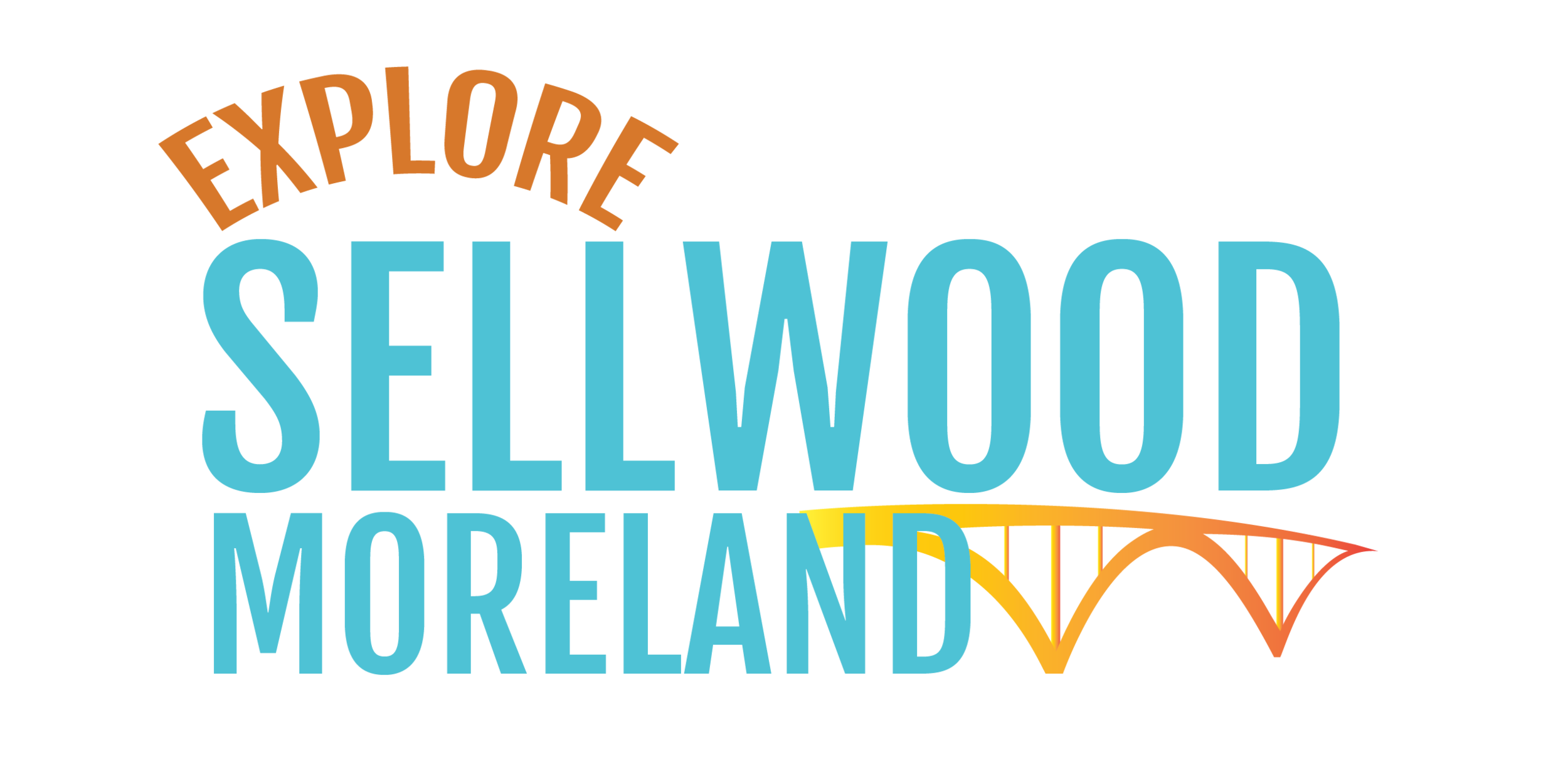Sellwood Moreland is Brimming with History
Historic photos from the collection of the Sellwood Moreland Improvement League (SMILE)
OUR NEIGHBORHOOD HISTORY
The area began in the mid-1840s when immigrants arrived over the Oregon Trail and established Donation Land Claims. The initial settlers engaged in business in fruit nurseries, logging and general farming. Most trade and socializing was not with Portland, which was quite distant, but with the City of Milwaukie, which was less than a mile south.
Steamboats provided reliable transportation, which began serving river communities in the early 1850s. The other route of transportation was a muddy track through the underbrush, known as Milwaukie Road. This 150-year old arterial, now known as SE Milwaukie Avenue, is one of the neighborhood's primary routes.
Sellwood
John Sellwood was an Episcopal minister who owned the land claim in what is now the Sellwood area. In May 1882, a real estate company purchased 321 acres from the Rev. John Sellwood and filed a plat for their new development named "Sellwood." The real estate company provided a free passenger ferry from downtown Portland to Umatilla Street to attract potential buyers.
The year 1887 marked the opening of the first bridge to span the Willamette River in downtown Portland. Sellwood was also incorporated as a city that year. From this period until the 1920s, the expansion of electrically powered streetcars drove the development of neighborhoods on the east side of the Willamette River. By 1887 Sellwood had almost 100 homes, three stores, a church and a school.
By 1890 Sellwood had added two hotels, three shoemakers, two grocers, a blacksmith, bookbinder, bookkeeper, two saloons, a druggist, a dressmaker and a brewery.
In the spring of 1892, transportation again improved after the completion of the new Sellwood streetcar line. Steamboat traffic began to decline as residents boarded the modern streetcars. With improved transportation, building in Sellwood increased as the small town began to become slightly more urban. In 1893 Sellwood officially relinquished its independence to become a part of the City of Portland.
Moreland
In early 1909 the 500-acre Crystal Spring livestock farm was platted into the subdivisions of Eastmoreland and Westmoreland. The developers promoted their developments as modern subdivisions, sold with sidewalks and curbs in place.
They began advertising Eastmoreland as a prestigious subdivision. Its proximity to the newly-established private Reed Institute was comparable to residential areas adjacent to Stanford University in California.
Westmoreland's target market was the new white-collar professionals who rode the streetcar to jobs in downtown Portland. Residents of both Westmoreland and Eastmoreland were also marketed with the nearby Eastmoreland Golf Course. By implication, Sellwood was an old-fashioned farm town.
Sellwood Moreland
The first quarter of the 20th century was an era of competitive "boosterism" that pitted Portland neighborhoods against each other. Sellwood and Westmoreland were no exception. As homes rose in Westmoreland, the newly-established local newspaper, the Sellwood Bee, became alarmed. It warned that a new commercial area might appear that would undermine the businesses in Sellwood.
The first business, a doctor's office, was constructed at the southwest corner of Bybee and Milwaukie in 1911. As the new business area grew, competition between Sellwood and Westmoreland began and did not end for fifty years.
By the 1920s, what we now know as the Sellwood Moreland neighborhood was composed of more than thirty subdivisions, which explains why streets are not in a tidily connected gird.
In late December 1925, the Sellwood Bridge opened. While Sellwood business owners hoped that this would increase customers, it did not meet expectations. While Sellwood's original main street, Umatilla, had been superseded by SE 13th when the streetcar arrived, the increasing auto traffic on Tacoma Street did not change it to a commercial strip.
While the population increased somewhat after the opening of the Sellwood Bridge, the arrival of the Great Depression slowed things down. As the Depression gave way to WWII and later post-war recovery, the Sellwood Moreland area fell behind the times. Sellwood became economically depressed. Newlyweds who had grown up in the area often chose other neighborhoods in which to raise their families. Some churches and businesses left Sellwood for Westmoreland. In the 1950s and '60s, older businesses closed, and empty storefronts lined SE 13th.
Then in the 1960's a few antique dealers looking for affordable storefront space discovered Sellwood. By the 1970's Sellwood claimed at least 30 antique shops in the neighborhood. At the same time, new residents began purchasing and rehabilitating older homes in the area.
As Sellwood began to improve, Moreland businesses changed. The 1980s saw the closure of variety, women's apparel, furniture and drugstores. However, the spaces were soon remodeled and occupied by restaurants, coffee shops and specialty merchandise stores. As the 20th century closed, new retail stores and restaurants replaced many of Sellwood's antique businesses.
Today
Today, Sellwood Moreland is a thriving neighborhood with many rehabbed homes and high-density housing such as row and townhouses adding new residents. Other businesses have opened along SE 13th in Sellwood with more new customers, while Westmoreland continues to change and improve. Time will tell as the Sellwood Moreland area moves well into its second century as a neighborhood.

